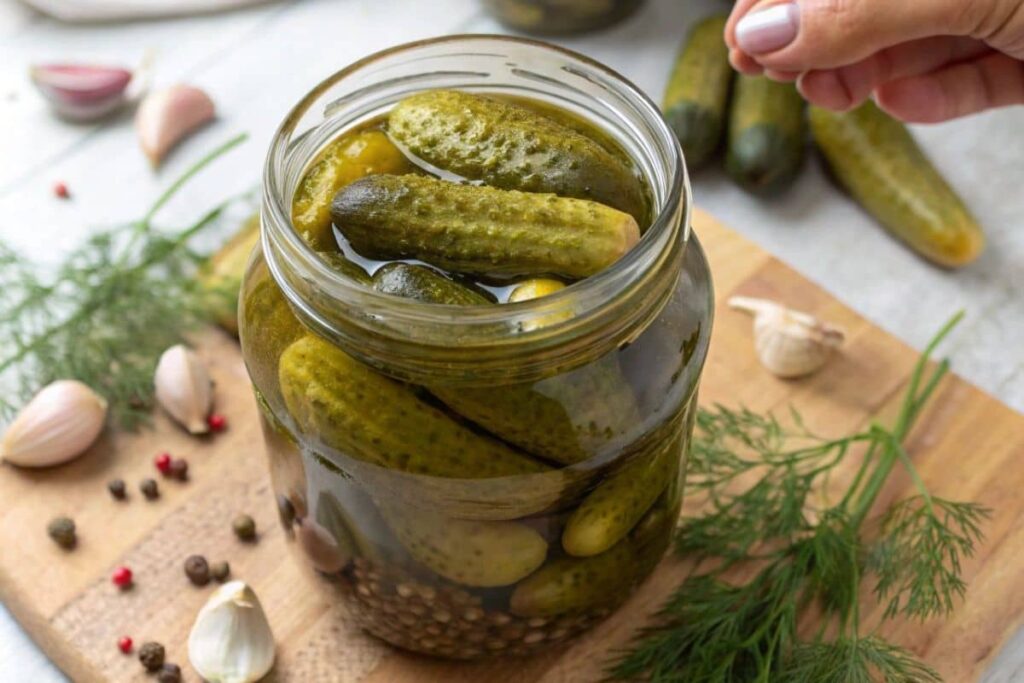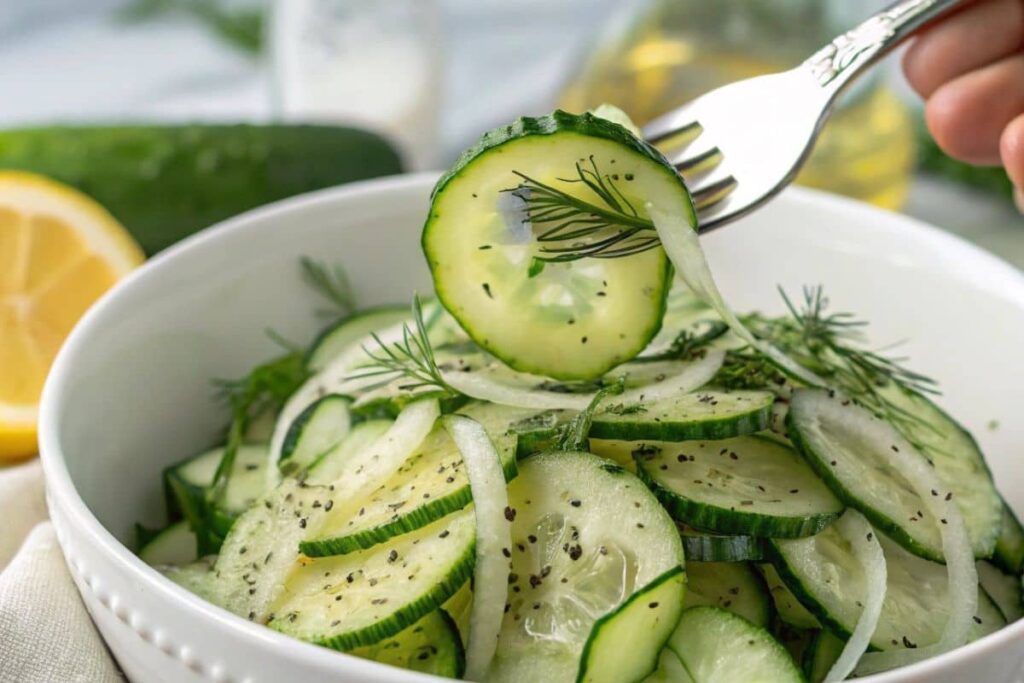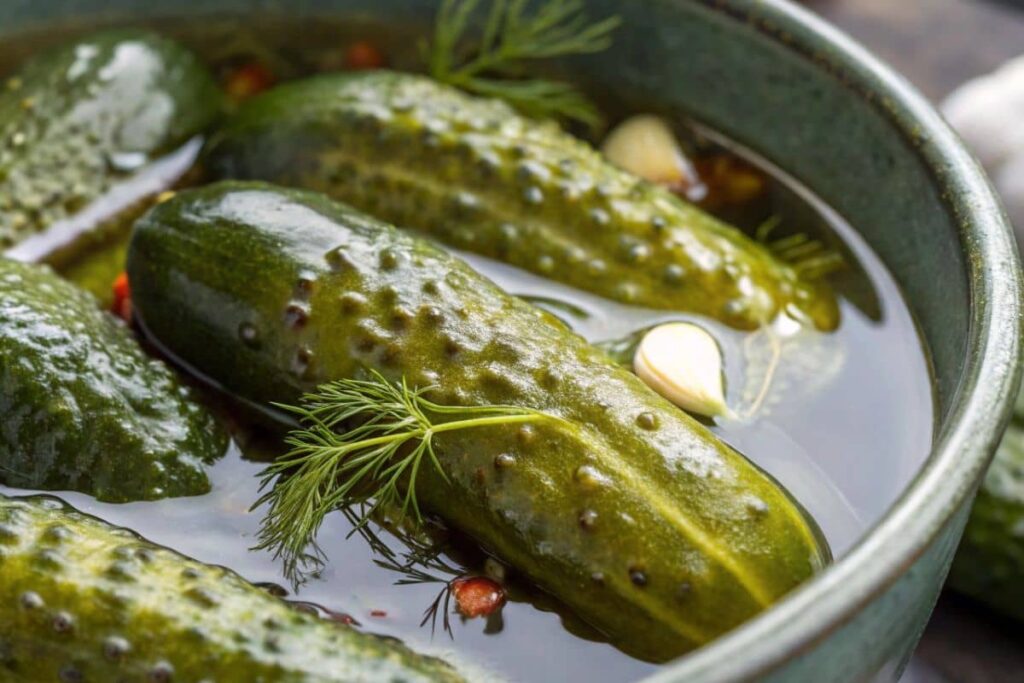Are Baby Cucumbers Persian Cucumbers? It’s a question that might seem straightforward, but the answer is a bit more nuanced. Some people love their cucumbers crunchy, while others prefer a touch of sweetness. But how do baby cucumbers and Persian cucumbers compare? Let’s dive into the world of cucumbers to uncover the truth about these two beloved varieties.
Table of Contents

Mini and Persian Cucumbers: What’s the Difference?
Cucumbers are a staple ingredient in many kitchens worldwide. Whether in salads, sandwiches, or as crunchy snacks, their versatility is undeniable. But what about mini cucumbers and Persian varieties? Are they the same thing, or is there a difference? Let’s break it down.
What Are baby Cucumbers?
Also called mini cucumbers, these small, crisp veggies are exactly what they sound like—tiny versions of regular cucumbers. Typically 4 to 6 inches long, they are prized for their crunchy texture and mild flavor.
Unlike some larger varieties, they are often seedless, making them perfect for snacking. Their compact size makes them easy to pack in lunchboxes or enjoy whole—no slicing needed! Their practicality and naturally sweet taste have made them a popular choice in recent years.
A Brief History of Persian Cucumbers
Now, let’s talk about Persian cucumbers. These are a favorite in Mediterranean and Middle Eastern cuisines, often used in dishes like tabbouleh and tzatziki. Persian cucumbers are slightly longer than mini cucumbers, ranging from 5 to 7 inches. They have a thin, smooth skin that doesn’t need peeling and a sweeter, less watery taste compared to traditional cucumbers.
Why are they called Persian cucumbers? The name reflects their origins—Persian cucumbers are believed to have been cultivated in modern-day Iran, where they’ve been a staple for centuries. Their popularity spread quickly thanks to their flavor and versatility.
Characteristics of baby Cucumbers
To truly understand the differences (and similarities!) between these smaller cucumbers and their Persian counterparts, let’s first explore what makes them unique.
Size and Appearance: How They Compare
These compact, green veggies have a smooth texture and often look like mini versions of a regular cucumber. Their Persian counterparts are slightly larger but share that same thin, smooth skin.
Both varieties are easy to eat without peeling, though Persian cucumbers may have a darker shade of green in some cases.
Quick Tip: If you’re at the grocery store and can’t tell the difference, check the size! If it’s under 6 inches, it’s likely a baby cucumber.
Texture and Flavor Profile
One of the standout qualities of mini cucumbers is their crunch. They’re firm yet juicy, making them ideal for snacking. But are baby cucumbers Persian when it comes to texture and flavor? Not exactly. Persian cucumbers are also crisp, but they lean more toward a tender texture with a slightly sweeter taste. Both varieties are delicious, but baby cucumbers might remind you of biting into a fresh apple, super crisp and satisfying.
Are Baby Cucumbers Persian? Understanding the Characteristics
Persian cucumbers are sometimes mistaken for baby cucumbers because of their size and shape. So again, are baby cucumbers Persian in terms of appearance? They look alike, yes—but Persian cucumbers have distinct features that set them apart, like their smoother skin and milder seeds.
Why Persian Cucumbers Are a Culinary Favorite
What makes Persian cucumbers special? Their versatility in cooking! They’re often used in refreshing salads, cold soups, and even as garnishes. And while people often wonder, “Are baby cucumbers Persian?”, these subtle culinary differences help separate them. Unlike larger cucumber varieties, Persian cucumbers don’t have a bitter aftertaste. Their thin skin means you can slice them up without peeling, talk about saving time!
“Persian cucumbers are the ultimate multi-taskers in the kitchen, they can go from a crunchy snack to a gourmet dish in seconds!”
Nutritional Benefits of Persian Cucumbers
Both baby and Persian cucumbers are low in calories and high in water content, making them excellent for hydration. Here’s a quick breakdown of the nutritional profile of Persian cucumbers:
| Nutrient | Amount (per 100g) |
|---|---|
| Calories | 15 kcal |
| Water Content | 95% |
| Vitamin C | 3.2 mg |
| Potassium | 147 mg |
| Fiber | 0.5 g |
With only 15 calories per 100 grams, Persian cucumbers are perfect for anyone looking to stay fit and healthy. Plus, their vitamin C content helps boost your immune system.
The Key Differences Between Baby and Persian Cucumbers
Alright, let’s tackle the big question: Are baby cucumbers Persian? The short answer is no, but they’re closely related. Let’s explore the key differences to settle the confusion once and for all.
Origin and Cultivation
While Persian cucumbers have deep roots in Middle Eastern history, baby cucumbers are a modern agricultural innovation. They’re often grown in greenhouses to maintain their small size and consistent quality. Persian cucumbers, however, thrive in sunny climates and are cultivated in open fields in countries like Iran, Turkey, and Greece.
Usage in Recipes
Here’s where things get interesting. Baby cucumbers are perfect for quick snacks, while Persian cucumbers shine in more elaborate dishes. For example:
- Baby Cucumbers: Eat them whole, dip them in hummus, or pack them in lunchboxes.
- Persian Cucumbers: Slice them for salads, pickle them for sandwiches, or use them in dips.
Pro Tip: If you’re looking for a crunchier bite, go for baby cucumbers. If you want a sweeter, more tender taste, Persian cucumbers are your best bet.
Common Misconceptions About Mini Cucumbers and Persian Varieties
Let’s face it: the world of cucumbers can be a little confusing. Some stores label small cucumbers as Persian varieties, while others use the terms interchangeably. No wonder people are asking, “Are Baby Cucumbers Persian?” Let’s clear up the confusion once and for all.
Are Baby Cucumbers Persian, or Just Similar?
Here’s the thing—baby cucumbers and Persian cucumbers are related but not exactly the same. So, are baby cucumbers Persian by definition? Not quite. Think of them as cousins in the cucumber family.
The smaller variety is often a hybrid bred specifically for its compact size and snackable nature. Persian cucumbers, while similar in appearance, belong to a traditional variety with a distinct flavor and origin. So next time you wonder, “Are baby cucumbers Persian or something else?”—you’ll know the answer.
“Calling baby cucumbers Persian is like calling a Mini Cooper a Rolls Royce—close in style, but not the same!”
Marketing Labels and Consumer Confusion
Why do stores mix up these names? It often boils down to marketing. “Persian cucumbers” sounds exotic and appealing, so some brands use the term loosely to boost sales. The same happens with other veggies—ever seen “baby carrots” that are just regular carrots shaved down? It’s all about presentation!
If you’re unsure what you’re buying, don’t hesitate to ask the vendor or check the packaging carefully. Knowing your cucumbers means better meals and fewer surprises.
Problems and Solutions When Identifying Cucumber Varieties
Have you ever bought what you thought were Persian cucumbers, only to discover they tasted different? Or maybe you’ve struggled to find the right variety for a specific dish. Let’s tackle these common problems.
Identifying Mini Cucumbers in Stores
One of the easiest ways to spot these smaller cucumbers is by their size. They are smaller than most varieties and are usually sold in packs. Unlike Persian cucumbers, they tend to have a more uniform, cylindrical shape.
If you’re shopping at a farmer’s market, don’t hesitate to ask the seller for details. Vendors are usually happy to explain their produce and might even offer a sample to taste!
How to Distinguish Persian Cucumbers from Others
Persian cucumbers have thin, smooth skin that’s free of wax—unlike regular cucumbers, which often have a glossy coating. They also feel slightly firmer to the touch. If you’re in doubt, give them a gentle squeeze; Persian cucumbers should feel fresh and plump, not soft or spongy.
Pro Tip: When in doubt, taste-test! Persian cucumbers have a mild, sweet flavor with no bitterness, making them easy to identify.
Why It Matters: Choosing the Right Cucumber for Your Needs
You might be thinking, “Does it really matter which cucumber I use?” The answer is yes! The type of cucumber you choose can make or break your dish. Let’s explore why.
Impact on Recipe Flavor and Texture
Imagine making a refreshing cucumber salad with a bitter cucumber—yikes! Baby cucumbers and Persian cucumbers are both excellent choices because of their mild flavor, but the texture can vary. Baby cucumbers are crunchier, while Persian cucumbers are more tender. Depending on your recipe, this subtle difference can be a game-changer.
For instance:
- Baby Cucumbers: Best for snacking, pickling, and adding crunch to salads.
- Persian Cucumbers: Perfect for slicing into thin rounds for garnishes or blending into smoothies and dips.
Health Benefits of Choosing the Right Variety
Both baby and Persian cucumbers are nutrient-packed, but their small differences can cater to specific health needs. For example, Persian cucumbers are slightly higher in potassium, which helps regulate blood pressure. Baby cucumbers, with their crunchier texture, are a great way to encourage kids to eat more veggies. Sneaky but effective, right? 😊
Growing Your Own Baby or Persian Cucumbers
Why rely on grocery stores when you can grow your own cucumbers at home? Whether you have a backyard or just a balcony, cultivating cucumbers is surprisingly easy.
Best Conditions for Growth
Cucumbers love sunshine, so make sure they get at least 6-8 hours of direct sunlight daily. Use well-draining soil rich in organic matter, and don’t forget to water them regularly—cucumbers thrive in moist conditions.
Here’s a fun fact: Persian cucumbers grow best in warm climates, while baby cucumbers are more adaptable and can even be grown in small pots.
Common Pests and Diseases to Watch Out For
Like all plants, cucumbers have their enemies. Aphids, cucumber beetles, and powdery mildew are the most common issues. Here’s how to deal with them:
- Aphids: Spray with a mix of water and dish soap.
- Cucumber Beetles: Use sticky traps or handpick them (if you’re brave!).
- Powdery Mildew: Apply neem oil or a homemade baking soda solution.
Growing your own cucumbers can save you money and guarantee fresh, organic produce all year round. Plus, it’s super satisfying to pick a cucumber straight from the vine and enjoy it on the spot.
Recipes Featuring Baby and Persian Cucumbers
Let’s dive into more ways to enjoy these versatile cucumbers in your meals! From snacks to full dishes, these recipes will highlight the unique qualities of baby and Persian cucumbers.

Refreshing Cucumber Mint Smoothie
This smoothie is perfect for a hot day or a refreshing pick-me-up. It’s light, hydrating, and packed with nutrients.
- Ingredients:
- 2 Persian cucumbers (peeled and chopped)
- 1/2 cup plain Greek yogurt
- 1/4 cup fresh mint leaves
- 1 tbsp honey (optional)
- 1/2 cup cold water or ice
- Instructions:
- Blend all ingredients until smooth.
- Taste and adjust sweetness with honey if needed.
- Serve chilled with a mint leaf garnish.
Tip: Persian cucumbers are ideal for this smoothie due to their mild, sweet flavor and tender skin.
Spicy Cucumber Bites
Looking for a quick appetizer or snack? These spicy cucumber bites combine crunch with a kick of heat.
- Ingredients:
- 4 baby cucumbers (sliced into thick rounds)
- 1/4 cup cream cheese
- 1 tsp chili powder
- A dash of hot sauce (optional)
- Chopped cilantro for garnish
- Instructions:
- Mix cream cheese, chili powder, and hot sauce.
- Spread the mixture onto cucumber slices.
- Top with cilantro for a fresh finish.
Cucumber and Feta Wrap
This light yet satisfying wrap is perfect for lunch or a quick dinner.
- Ingredients:
- 2 Persian cucumbers (thinly sliced)
- 1 whole wheat tortilla
- 1/4 cup crumbled feta cheese
- 1/4 cup hummus
- A handful of spinach leaves
- Instructions:
- Spread hummus over the tortilla.
- Layer cucumbers, feta, and spinach.
- Roll the tortilla tightly and slice it in half.
Pro Tip: Persian cucumbers’ tender skin and sweet taste pair beautifully with the tanginess of feta cheese.
Cucumber Avocado Salsa
This salsa is a fresh twist on traditional salsa and perfect for dipping chips or topping grilled meats.
- Ingredients:
- 2 baby cucumbers (diced)
- 1 ripe avocado (diced)
- 1 small red onion (finely chopped)
- 1 tbsp lime juice
- Salt and pepper to taste
- Instructions:
- Combine all ingredients in a bowl.
- Mix gently to avoid mashing the avocado.
- Serve immediately or chill for 15 minutes for a more intense flavor.
Persian Cucumber Tzatziki
This creamy dip is a classic in Mediterranean cuisine and perfect for pairing with pita or grilled meats.
- Ingredients:
- 2 Persian cucumbers (grated)
- 1 cup Greek yogurt
- 1 clove garlic (minced)
- 1 tbsp olive oil
- 1 tbsp fresh dill (chopped)
- Salt and pepper to taste
- Instructions:
- Grate the cucumbers and squeeze out excess water.
- Mix all ingredients in a bowl until well combined.
- Chill for at least 30 minutes before serving.
Cucumber and Mango Salad
This sweet and tangy salad is a delightful side dish or snack.
- Ingredients:
- 2 baby cucumbers (sliced)
- 1 ripe mango (diced)
- 1 tbsp lime juice
- 1 tsp honey
- A pinch of chili powder
- Instructions:
- Toss cucumber and mango slices in a bowl.
- Drizzle with lime juice, honey, and a sprinkle of chili powder.
- Serve immediately for the best flavor.
Quick Pickled Persian Cucumbers
This recipe is for those who love the tangy crunch of pickles. It’s simple and doesn’t require canning.
- Ingredients:
- 6 Persian cucumbers (sliced)
- 1 cup white vinegar
- 1/2 cup water
- 2 tbsp sugar
- 1 tbsp salt
- 1 tsp mustard seeds
- 1 clove garlic (sliced)
- Instructions:
- Heat vinegar, water, sugar, and salt in a saucepan until dissolved.
- Pack cucumber slices, garlic, and mustard seeds into a jar.
- Pour the warm liquid over cucumbers.
- Let it cool, then refrigerate for at least 24 hours before enjoying.
Did you know? Pickled cucumbers can last for weeks in the fridge, making them a great addition to sandwiches and salads!

Conclusion: Are Baby Cucumbers Truly Persian?
Understanding the nuances between different cucumbers, especially regular and Persian varieties, can elevate your cooking game and bring out the best in your recipes. While Persian cucumbers offer a sweeter, crunchier, and more versatile option, traditional cucumbers still have their place in specific dishes like pickling or slicing.
If you’re looking for more information about cucumbers or are curious about their nutritional benefits, don’t forget to explore topics like What Is the Difference Between a Cucumber and a Persian Cucumber? and Calories in Persian Cucumber for deeper insights. And if you’re branching out into other food favorites, why not check out Gouda Cheese or even the unique tang of Blue Cheese for inspiration in your culinary journey?
Whether you’re preparing a crisp salad, a creamy tzatziki, or a quick snack, knowing the right cucumber to use makes all the difference. So, grab your favorite variety and get creative in the kitchen! 🥒






